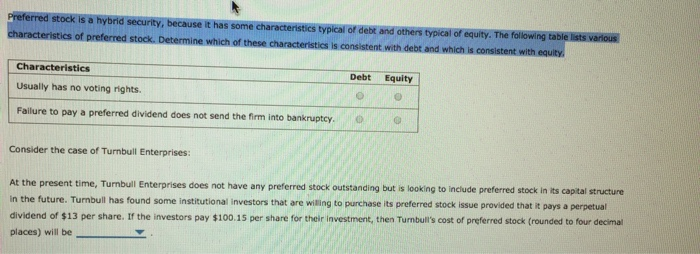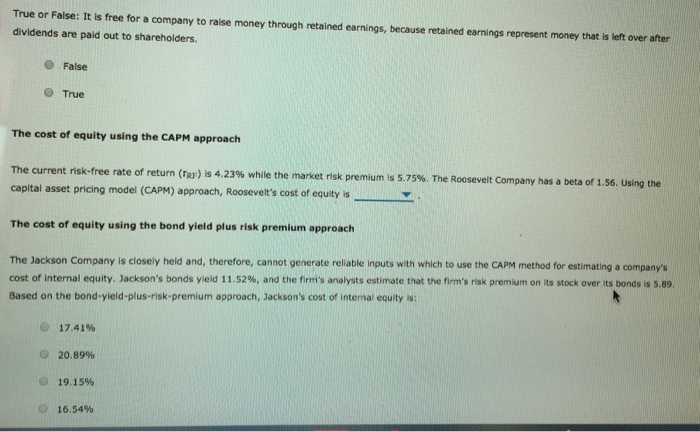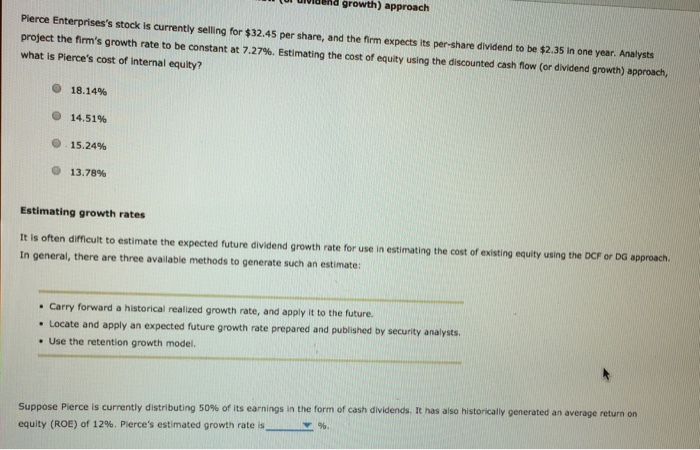Preferred stock is a hybrid security, because it has some characteristics typical of debt and others typical of equity. The following table lists various characteristics of preferred stock. Determine which of these characteristics is consistent with debt and which is consistent with equity Characteristics Debt Equity Usually has no voting rights Failure to pay a preferred dividend does not send the firm into bankruptcy. Consider the case of Turnbull Enterprises: At the present time, Turnbull Enterprises does not have any preferred stock outstanding but is looking to include preferred stock in its capital structure in the future. Turnbull has found some institutional investors that are wiling to purchase its preferred stock issue provided that it pays a perpetual dividend of $13 per share. If the investors pay $100.15 per share for their investment, then Turnbull's cost of preferred stock (rounded to four decimal places) will be True or False: It is free for a company to raise money through retained earnings, because retained earnings represent money that is left over after dividends are paid out to shareholders. False O True The cost of equity using the CAPM approach The current risk-free rate of return (rgF) is 4.23% while the market risk premium is 5.75 %. The Roosevelt Company has a beta of 1.56. Using the model (CAPM) approach, Roosevelt's cost of equity is capital asset pricing The cost of equity using the bond yield plus risk premium approach The Jackson Company is closely held and, therefore, cannot generate reliable inputs with which to use the CAPM method for estimating a company's Cost of internal equity. Jackson's bonds yield 11.52% , and the firm's analysts estimate that the firm's risk premium on its stock over its bonds is 5.89. Based on the bond-yield-plus-risk-premium approach, Jackson's cost of internal equity is: 17.41 9% O 20.89% O 19.15% 16.54% d growth) approach Plerce Enterprises's stock is currently selling for $32.45 per share, and the firm expects its per-share dividend to be $2.35 in one year. Analysts project the firm's growth rate to be constant at 7.27 % . Estimating the cost of equity using the discounted cash flow (or dividend growth) approach, what is Pierce's cost of internal equity? 18.14% O 14.51% 15.24% O 13.78% Estimating growth rates It is often difficult to estimate the expected future dividend growth rate for use in estimating the cost of existing equity using the DCF or DG approach. In general, there are three available methods to generate such an estimate: Carry forward a historical realized growth rate, and apply it to the future. .Locate and apply an expected future growth rate prepared and published by security analysts. Use the retention growth model. Suppose Pierce is currently distributing 50 % of its earnings in the form of cash dividends. It has also historically generated an average return on %. equity (ROE) of 12%. Plerce's estimated growth rate is









